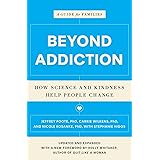The global discourse surrounding drug policy and its international ramifications is a subject frequently debated, often with strong opinions on accountability and effective strategies. As highlighted in the accompanying video featuring Venezuelan Foreign Minister Yvan Gil, a critical perspective is often directed towards the role of the United States in the global drug market. The assertions presented suggest a fundamental shift in how the international community perceives the origins and perpetuation of the global drug crisis, moving the focus from producer nations to consumer markets and the efficacy of historical policy approaches.
The Global Drug Market: A Demand-Driven Perspective
A central tenet of the argument put forth by the Venezuelan Foreign Minister is that for drug trafficking to exist, a significant market must necessarily be present. From this vantage point, the United States is frequently identified as the world’s largest consumer of illicit drugs. This perspective posits that the immense demand within the U.S. acts as a powerful gravitational pull, drawing narcotics from various corners of the globe and inadvertently fueling the very networks of production and distribution that international efforts seek to dismantle.
Venezuela, it is maintained, does not produce illicit drugs, a claim supported by national anti-drug reports. This highlights a broader point often raised in international forums: the focus on supply-side interdiction, while important, may overlook the critical role of demand reduction. When a vast consumer base exists, supply chains are continually incentivized to adapt and overcome interdiction efforts, leading to a perpetual cycle of eradication and re-establishment in different regions or through new methods.
Examining the “War on Drugs” Legacy and Policy Failures
The conversation inevitably turns to the historical context of U.S. domestic drug policy, specifically the “War on Drugs.” This initiative, formally declared by President Richard Nixon in 1971, represented a significant escalation in governmental efforts to combat drug abuse and trafficking. The original intent was to reduce both the supply and demand for illegal drugs through a combination of law enforcement, military intervention, and public awareness campaigns. However, as the video underscores, the outcomes of this protracted conflict have been intensely scrutinized.
Over the decades, immense sums of money have been invested in this endeavor. The transcript mentions “un billón de dólares,” which in some Spanish-speaking contexts can refer to a trillion dollars. While the initial investment in 1971 was substantial, the cumulative cost of the War on Drugs over the past half-century in the United States is indeed estimated to be well over a trillion dollars, encompassing law enforcement, incarceration, military aid, and various prevention programs. Despite this staggering financial outlay, the desired results, particularly a significant reduction in drug availability or addiction rates, have largely remained elusive. Instead, critics argue that the policy has contributed to a cycle of “death and destruction,” fostered mass incarceration, destabilized regions, and ultimately failed to stem the tide of addiction, leading to an undeniable and tragic societal cost.
Addressing the Pandemic of Addiction: A Public Health Imperative
What is often described as an “epidemic of addicts” or, more starkly, a “pandemic of drug addicts” within the United States, represents the human cost of these complex dynamics. This characterization shifts the conversation from a purely criminal justice issue to a profound public health crisis. Drug addiction is a chronic, relapsing brain disease, influenced by a complex interplay of genetic, environmental, and developmental factors. The sheer scale of substance use disorders in the U.S. reflects deeply embedded societal challenges, including economic disparities, mental health issues, and inadequate access to treatment and support services.
The presence of such widespread addiction impacts communities across the nation, leading to increased healthcare burdens, reduced productivity, strains on social services, and, most tragically, an escalating number of overdose fatalities. From this perspective, focusing predominantly on interdiction and enforcement without sufficiently addressing the underlying public health dimensions of addiction is perceived as an incomplete and ultimately ineffective strategy. A comprehensive approach, many argue, must prioritize prevention, accessible treatment, harm reduction, and sustained recovery support alongside law enforcement efforts.
Beyond Blame: Fostering International Cooperation and Development
The minister’s message to Washington is clear: the focus should not be on blaming other countries for what are fundamentally domestic problems. This sentiment resonates with a growing number of international observers and policy experts who advocate for a paradigm shift in global drug policy. Rather than finger-pointing, an emphasis on genuine cooperation and development is proposed as the more constructive path forward. It is suggested that the true “mafias” — the sophisticated transnational criminal organizations that profit from drug trafficking — are not confined to Latin America but operate globally, leveraging complex financial networks and corruption that transcend national borders.
Effective combat against these powerful entities requires multifaceted, coordinated international responses that extend beyond traditional law enforcement tactics. Such cooperation would ideally involve shared intelligence, joint investigations, and strategies to disrupt financial flows rather than solely focusing on physical supply routes. Furthermore, sustainable development initiatives in regions often exploited by drug cartels could provide viable economic alternatives for communities, thereby reducing their vulnerability to the allure of illicit crop cultivation or trafficking involvement. This approach recognizes that poverty and lack of opportunity often serve as significant drivers for participation in the drug trade.
Ultimately, a more collaborative and empathetic approach to the complex challenge of the US drug crisis is being advocated. This involves recognizing the interconnectedness of global drug markets, prioritizing public health over punitive measures, and fostering genuine international cooperation centered on shared responsibility and socio-economic development rather than a cycle of blame. A re-evaluation of current strategies is considered crucial for effectively addressing this enduring and devastating global challenge.











